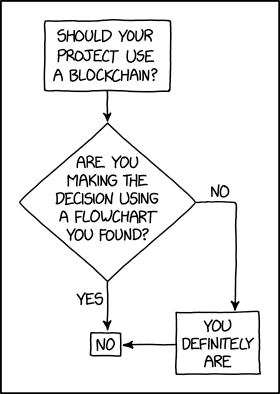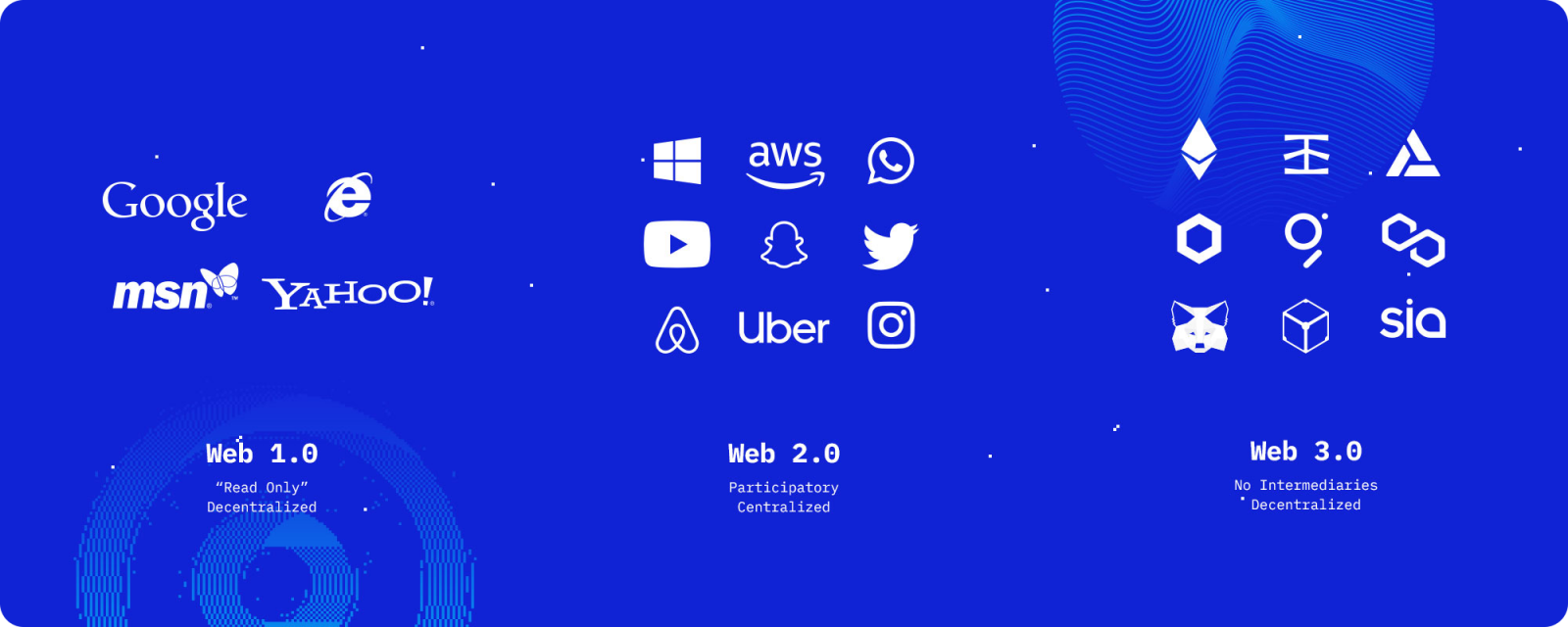

~ 6 min read
NFTs, DeFi, DAOs, Solidity, blockchains, Ethereum smart contracts. You’ll be forgiven for thinking we’ve been catapulted into another dimension (insert metaverse joke here).
Unfortunately, the media usually focuses only on sensationalism: NFTs selling for $69 million, users paying $3.5 million for a piece of virtual land, and many related stories. This general idea that Web3 only consists of overpriced NFTs and virtual plots dilutes all the real-world applications that can benefit from it.
In this article, we’ll look at some of the most popular Web3 concepts. We’ll also explore the pros and cons before providing some sane advice on how your project can incorporate Web3 technologies into new and existing products or services.
Please note that no part of this article should be construed as financial advice.

Credit: xkcd
I’ll start by saying Web3 and related technologies aren’t always applicable to all projects. Does your new CRM need to log events on the blockchain? More than likely not. By shoehorning Web3 technologies into your service for the sake of it, you’re doing yourself a disservice.

Web 1.0
Web 1.0 refers to the earliest version of the world wide web. It saw the rise of sites like Yahoo, Google, and MSN. Designs were quite basic, and websites provided limited interactivity. The period spanned from roughly the early nineties to the early 2000s.
Web 2.0
By 2005, we were in the next phase: Web 2.0. Websites became more interactive, and we saw the rise of social networks and user-generated content. Apps like Facebook (Meta), Instagram, Twitter and YouTube all saw exponential growth in popularity as they became part of our daily life.
Web 3.0
Web 3.0 signifies the next significant paradigm shift. It’s a move to a more decentralised environment. One that makes greater use of AI, 3D, and being in a state of continuous connectivity.
Even though there is enormous potential in Web3, we need to be mindful of its potential disadvantages to garner a holistic view of it all.
1. Energy consumption: one of the most significant drawbacks is the energy consumption by blockchains using Proof of Work for consensus. One of the most popular blockchains for dApps (decentralised apps), Ethereum, is already working toward Ethereum 2.0, in which they will switch from the power-hungry Proof of Work to the more environmentally friendly Proof of Stake.
2. Complicated: adoption of new technology relies upon how easily new and existing users can comprehend and use it. For some, actions like installing a crypto wallet like MetaMask, buying some ether, and sending it to the wallet to interact with a website might be an obstacle. Over time, however, this will become as commonplace as using apps on our phones to do online banking.
3. Regulation: even though regulation is already complicated, in a more decentralised world, moderating hate speech and policing illegal content will be more challenging.
Real-world applications in Web3 will primarily interact with a blockchain via smart contracts. Examples of these applications span from things like games and collectibles to marketplaces and decentralised finance.
Let’s have a look at some of these examples:
These are all more extensive examples that require building most of the applications on the blockchain. There are also real-world examples that make use of existing technology. A good analogy is building an application that integrates with the Facebook or Twitter API.
Some of these examples include:
The Web3 landscape is vast with new terminologies and protocols. We’ll explore some of these below.
Front end and back end
Developers entering the Web3 world will use some familiar tools, and several new ones. Front-end developers will use the same tools they’ve been using in Web2: HTML, CSS, JavaScript, and frameworks like React and Angular. Back-end developers will use Ethereum development frameworks like Hardhat, Truffle, and Brownie to develop, test and deploy smart contracts.
Blockchains – testing and production
Even though developers can launch a local blockchain for testing using something like Ganache, at some point, they’ll need to deploy to testnets (the “staging” environment) and eventually the mainnet (the “live” environment).
To achieve this, you need access to a node in that blockchain network. This is where third parties like Alchemy and Infura come in. They provide nodes as a service, allowing you to deploy smart contracts and execute transactions without the need to run your own node.
Storage on the blockchain
Another consideration is file storage. Even though you can make use of centralised file storage services like S3, the more decentralised approach is making use of a service like IPFS (InterPlanetary File System) or Swarm. These systems store files in a peer-to-peer network. Many NFTs rely on these decentralised storage networks to ensure the related meta information and media are always accessible.
Off-chain data
Smart contracts on Ethereum cannot access real-world data. The kind of data you can readily access in Web2 by consuming various APIs or web services. These smart contracts need a way to access, for example, the latest weather, market prices, or even custom data feeds. Oracle networks is a solution to this problem. This is a decentralised group of independent blockchain oracles that provide the blockchain with real-world data.
Smart contract caveat
When deploying a smart contract to the blockchain, it can never be modified. With Web2, you deploy code, and if there is an issue, you can simply deploy a newer version that overwrites the previous version. With smart contracts, you can deploy an updated version of it, but it will be available at a new address, and the old contract will always still be available.
Whether it’s an existing project or something brand new, determining if Web3 is a good fit is always the first step. You don’t have to take the plunge into a complete, decentralised Web3 system. Many Web3 systems now are hybrids, incorporating parts of Web3 and Web2 to create great user experiences and innovative products.
It can even be as simple as allowing new users to sign up using a crypto wallet like MetaMask. Or a website for a launched NFT and allowing those owners to access unique owner benefits on the website.
The whole Web3 ecosystem is relatively new, and connecting all the new tools, technologies, and protocols is complex. Fortunately, there are always new tools and frameworks coming out that make things a little easier.
This article only scratches the surface of what’s involved and possible in this ever-evolving landscape of Web3.
Stay tuned. There are exciting times ahead!